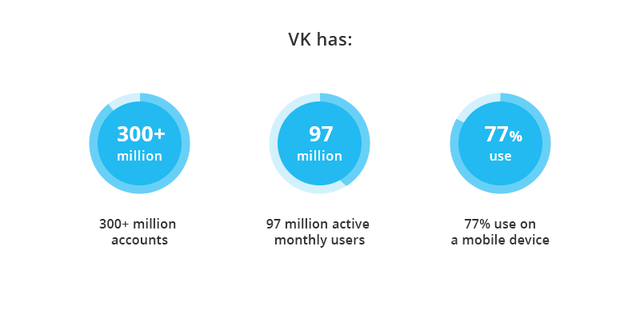ITTF – from strength to strength with online video strategy
The International Table Tennis Federation (ITTF) is the governing body for 226 worldwide associations and oversees more than 120 international events. It is one of the largest sports federations in the world and has a proud history, having organised the World Table Tennis Championships since 1926.
Our partnership with the ITTF started back in 2017 and has since gone from strength to strength. Today, Tellyo is integral to the ITTF’s direct-to-fan video strategy, enabling the federation to stream matches and share clips
from tournaments previously difficult to access for fans across the globe.
Increased global streaming collaborations
Starting with one trial tournament in 2017, Tellyo now supports all of the ITTF’s major tours and championships. More recently, our platform has been used during regional events in remote locations within Fiji, Nigeria and India.
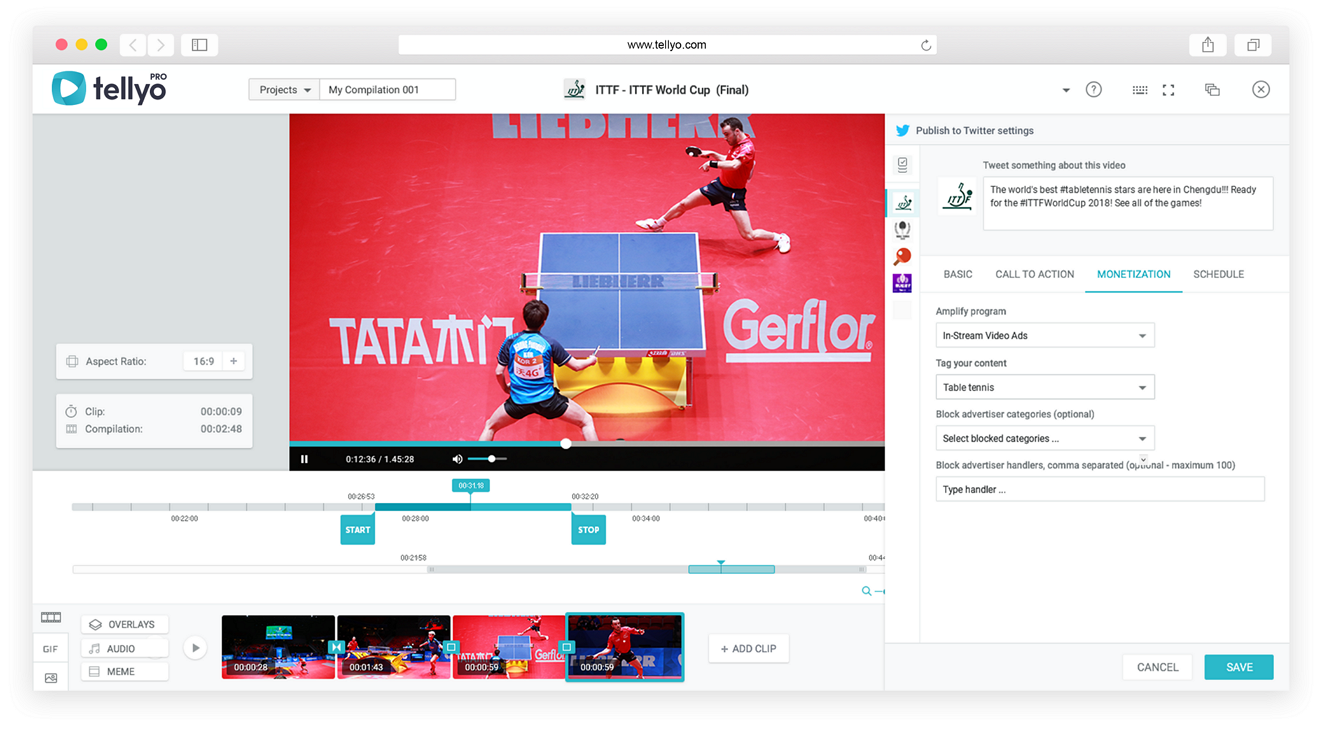
When working in remote locations, the ITTF rely on us to seamlessly deliver streamed content to global fans online. The key to our success is two-fold. Firstly, our platform’s infrastructure is capable of receiving signals from anywhere in the world, however remote, thanks to the network of servers we use. Secondly, we provide an extensive set of advanced tools to ITTF production teams, expertly meeting their various technical requirements.

Video clips further boosting engagement with the ITTF
With a greater number of tournaments being covered, the ITTF is seizing these opportunities to create more video clips for its social media channels. In turn, these clips help to drive viewers to its live stream and are having a hugely positive impact on overall engagement with the federation and table tennis online.
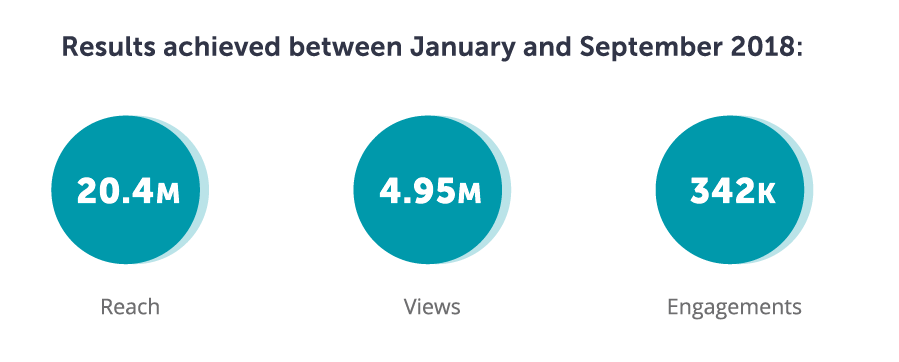
“I cannot imagine life without Tellyo. The platform is at the core of our social video strategy, helping us to showcase dynamic sports content from multiple ITTF tournaments online. All-in-all, thanks to Tellyo, we’re better able to entertain and excite our fans, dramatically improving our digital reach, video views and fan engagement levels across social media.”

The most common live video streaming habits of digital audiences
It’s extremely difficult to pin down live video streaming audiences. Data will vary depending on world regions, such as a country’s internet quality, its level of technology adoption and development, and so on. However, a new report has done an incredible job of helping us to build a better understanding of digital viewers, as much as it’s possible.
The IAB (Interactive Advertising Bureau) report – Live Video Streaming: A Global Perspective – provides a great benchmark regarding trends across live video streaming. It’s a must read for anyone interested in the broadcasting industry and for people who want to stay up to date with the most recent studies. Here’s a short, but insightful summary of the survey’s results.
Check out our other stories:
- Ideas for online video content when you can’t show games
- Will the real host of the 2022 FIFA World Cup be the web?
- Still looking for a prime alternative to Snappy TV?
An overview of live video streaming consumption
The IAB report highlights that we are all surrounded by devices that enable us to watch video streams – such as PCs, laptops, smartphones, tablets and web connected TVs, all of which are some of the most common screens we use to catch the content we want to see.
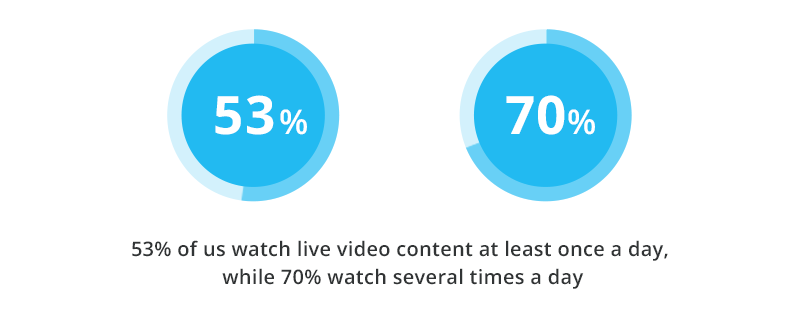
The report also makes a strong point that video streaming is still growing rapidly. Forty-seven per cent of people who took part in the IAB survey said that they stream more videos in 2018 than they did a year ago. Russians are a model example of what the report calls the ‘video thirsty user’, as 61% of Russian respondents said they watch more streams now than a year ago.
How we watch content
Out of all of our web-connected devices, smartphones are the most popular when it comes to watching video streams (for 62% of survey respondents). In second place comes the PC/laptop, while tablets come third. The reports notes that the most popular ways to watch video streams is further reflected in the devices people keep at home, as listed below.
“What device I own or have access to”:
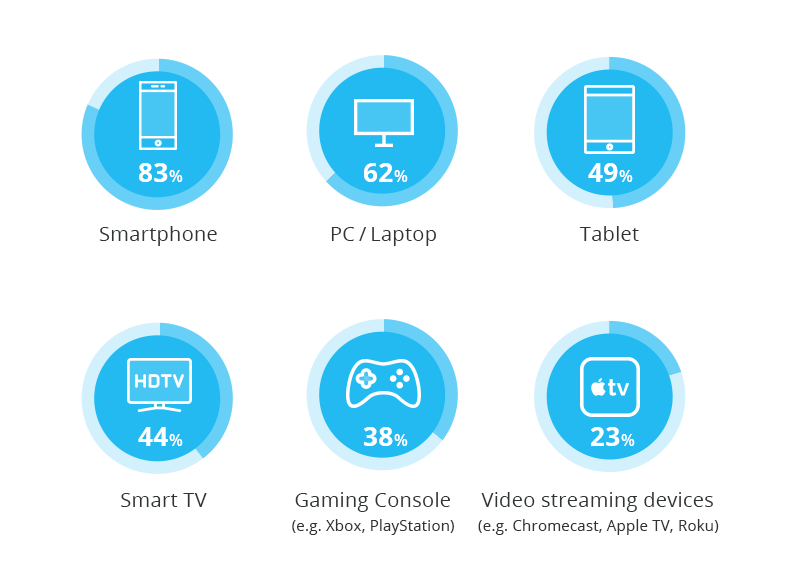
The ever-present smartphone is noted as the device on which we watch live video content most frequently – 67% of respondents use them at least once a day or several times a day. In terms of use, the second device is a Smart TV, while tablets and video streaming devices (Chromecast, Apple TV) come joint third.
However, while we might use smartphones to watch live video content most often, the report concludes that the device is not the best platform for longer formats.
It seems that audiences around the world prefer to watch long formats, or videos for longer periods of time, on bigger screens. The Smart TV comes top with 67% watching more than 30 minutes of live streams daily; while video streaming devices (that are connected to and watched through a TV) follow closely behind on 62%. Only in 47% of cases are smartphones used to watch video for 30 minutes or more.
Audiences prefer to watch longer video content on bigger screens, while smartphones are often used for short videos no longer than 10-30 minutes in length.
Where we consume content
Social media now plays a key role in many areas of life. Unsurprisingly, viewers like to watch live streams mostly on social media (52%), with dedicated, digital streaming platforms with subscriptions coming in second place (41%).
The report highlights that social platforms are a natural place for streaming and probably one of the best places for viewing:
- (Almost) everyone can access social media streams, as long as they have a web connection.
- Social media is free to use.
- Social channels are widely accessible via almost any web-enabled device you can imagine: PCs, smartphones, tablets, Smart TVs, gaming consoles etc.
- Social offers specific features that help broadcasters to promote and inform users about a stream.
- Users also benefit from specific features, such as the ability to chat during a stream.
Digital streaming subscription platforms, like Hulu Live or DirectTV Now, are dedicated to digital entertainment and offer access to multiple TV channels using a connected device. Users can watch anywhere, either live or on-demand at a more convenient time.
Other, popular sources of live video streams are:
- TV network websites or apps (like ITV Hub, All4 or other web services that provide live streams from traditional TV broadcasters) – 34%
- Gaming websites or apps – 33%
- Paid TV service provider website or app – 21%
- Other sources – 9%
Content we like to consume
The most popular type of content that is streamed by digital viewers around the world is the TV series (for 45% of users).
Thirty-one per cent watch live sports, with 30% tuning into how-to tutorials. Gaming fans represent 29% of live video content consumers. What’s interesting is that live videos made by friends or family members are appealing to 28%; while news is interesting for 27%, videos made by an online celebrity or influencer for 24%, live concerts for 23% and talk shows for 22%.

There isn’t anything too surprising about the above types of content we like to consume. For most people, a box-set TV serial is the go-to content across the web in general, including video on-demand (VOD) and live streaming services. Live sports events are then an obvious second, as sport is all about being ‘in the moment’.
Where we consume
Gone are the days of a TV set in every room, probably forever. Live content is now everywhere, across laptops, smartphones and tablets to name just a few. These new screens are often the first thing we look at in the morning and, quite probably, the last thing we look at before going to sleep.
According to the IAB report, 73% of live video content is consumed at home. Outdoor consumption appears to be alongside journeys and social events, like going to a restaurant, bar or the park, or on the way to work and while shopping.

Thirty-seven per cent of viewers spend 81% or more of their time live streaming in the company of others, which increases to 56% of viewers when using a smartphone. This is worth remembering, as it means that up to just over half of your streaming audience will be more than one person, depending on the device being used.
How we multi-task while watching live streams
While watching live streams an audience’s attention is highly distracted. But this doesn’t mean that they don’t pay attention to what they see on the screen. In fact, while they will do other things, these are more often related to what is being watched.
Things (related to what is being watched) that viewers do while watching live content:
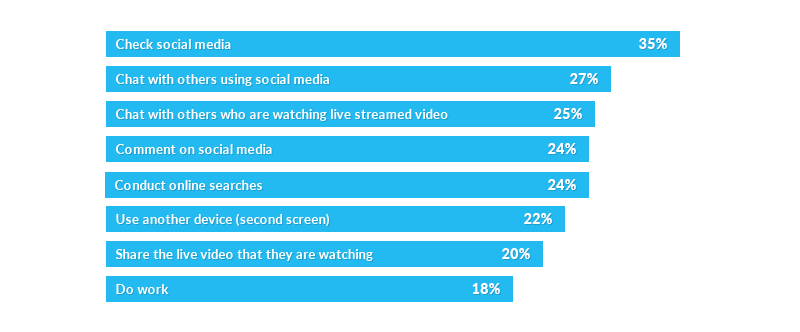
Why we watch live streams
So, what exactly does an audience look for in a live stream? The IAB report asked respondents – What are the main reasons for you to watch live video streaming content? – and the responses shed light on why we watch:
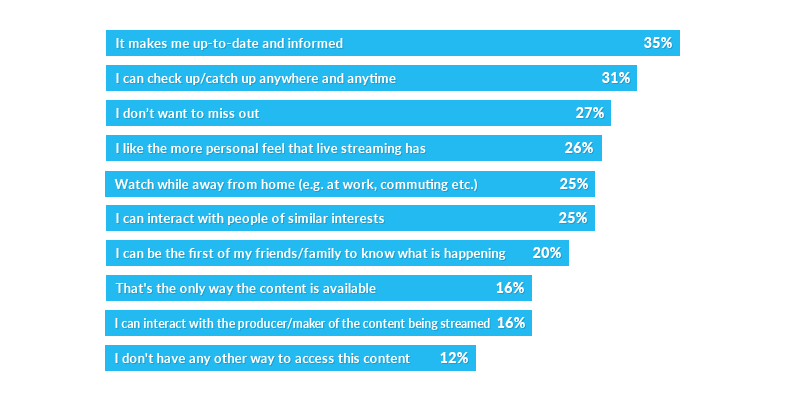
Something that should be of valuable insight to many live content industry professionals, the report also asked: Which of the following factors influence your choice of live video streaming sources?
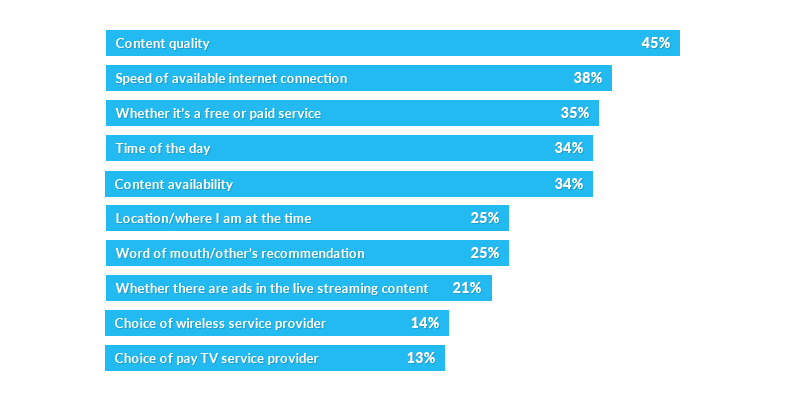
It seems that technical aspects, such as content quality and the speed of connection, are crucial here, while ads (or the absence of ads) in a live stream are not so important after all.
Key takeaways about the live video consumer
Based on the IAB report’s survey results, if we were to create a persona for the ‘live video content consumer’, the following would form their habits and thoughts. They would:
- Watch live video content a couple of times a day
- Own a smartphone and use it to stream live video content
- View streams via social media channels
- Favour TV serials and sports
- Enjoy watching live streams in the late evening – from 8pm to 11pm
- Check social media and look for related online content while watching a stream
- Appreciate content quality and connection speed
- Like how live content makes them feel up to date and well informed
Although the above makes some pretty big generalisations, once you start to glean new insights from reports such as the IAB’s, then you can build a better picture of the live video content consumer. Worth remembering!
Reaching the live video streaming consumer
When it comes to execution of your live video strategy and getting the tools to reach the live video consumer described above, simply try one of our Tellyo solutions. Tellyo Pro is for regular, extensive broadcasts; while Tellyo On Demand is designed for more occasional use. If you’re not sure which solution would suit you, please get in contact and the team here will be more than happy to help.
Vertical video is becoming more important than ever
Vertical video is often viewed as the awkward sibling of the landscape format. But vertical is having its time to shine, thanks to the meteoric rise of smartphones and the development of apps like Snapchat.
For many years we saw 16:9 as the ultimate format – the assumption being that video should be displayed horizontally. Our TVs and computer screens are wider than higher, and the same goes for cinema screens. Moreover, vertical video, with its black blocks either side, always looked ugly, right?
But times are changing. The vertical video format is moving ever closer to becoming a standard for mobile video consumption. Vertically-oriented videos have taken hold, particularly across the mobile landscape:
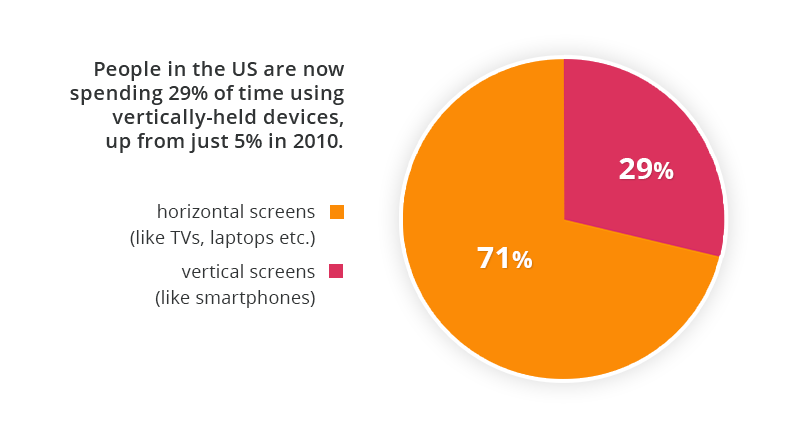
Why the shift from horizontal to vertical video?
Partly due to the preferences of Gen Zers, as this generation like to consume vertically-oriented content. These post-millennials aren’t attached to ‘classic’ screen formats like older generations. Mobile is the natural environment for Gen Z, so the vertical format has never been a problem for them as that’s how they hold their phone anyway.
Many organisations have tapped into this acceptance of vertical videos. When the BBC relaunched [3] its award-winning and internationally renowned news app, they incorporated a vertical video experience aimed at a younger audience of smartphone users. Vertical videos are now created specifically with this audience in mind, as summed up by James Montgomery, Digital Development Director for BBC News:
“Being good at delivering news to mobiles is particularly important for younger audiences, for whom the smartphone is the primary, or possibly only, source of news.”
If you look at the BBC app today, it includes a prime spot for regular, vertical video news stories.
But it’s not only about younger generations. We all use mobile devices more often than ever. Everyone has a smartphone, and thanks to better connectivity and cheaper mobile internet access, we use Facebook, Instagram, Twitter and Snapchat literally everywhere – and vertically!
All of the main social media channels have adjusted the way they display video and they now fit their video content vertically, without any annoying and ugly black frames.
Video content consumption is evolving
The acceptance and integration of vertical video content into apps and social media platforms is just one element of much broader changes in the way people now consume content. For example, audiences want more real-time information, while online services are widely considered a primary means of media consumption – both of which are topics being discussed at this week’s Mobile World Congress (MWC), as part of its Content & Media theme.
Tellyo’s Jakub Majkowski recently shared his thoughts on these MWC topics in a LinkedIn article: Evolving relationships, live events and fan engagement.
Is the future vertical or horizontal?
Both vertical and horizontal standards will develop in parallel. There is obviously a need for both, simply because video will always come in a broad range of content types – from news clips consumed on the go to broadcast-quality video-on-demand. We still prefer to watch 16:9 formats on our TVs and laptops for example, and this probably isn’t going to change. At least not before VR becomes standard in cinemas and home entertainment systems!
What will become increasingly important is to be able to serve video content in different formats, so viewers get their preferred choice for their favoured device. Here at Tellyo, our platform allows you to set different aspect ratios for your published video content (other than 16:9). We’ve included ratios that fit the mobile formats used by popular social networks like Facebook, Instagram, Twitter and Periscope. Speak to our team about going vertical!
Maximise great moments in sport, just like the Minnesota Miracle
The 52nd Super Bowl Final hits our screens this weekend. The road to the final has been full of trials and tribulations. Yet, it’s the Minnesota Vikings’ failure to reach Sunday’s game that epitomises the extreme highs and lows of American Football’s annual showpiece.
See other, sports related stories:
- The future of sports fans: what should you expect
- 5 sports clubs keeping fans excited with creative video content
The Vikings’ failure was the ultimate price of their 38-7 loss to the Philadelphia Eagles – a result which only added to the team’s historical playoff woes. Minnesota have now lost six NFC championship play-off games over a 42-season span, causing some to call it a curse.
“There is no damn curse,” said Vikings coach Mike Zimmer to local paper, The Star Tribune.
Yet only a week before the Eagles loss the Vikings were on a high. In a dramatic last-minute moment, they had won their divisional round, defeating the New Orleans Saints 29-24. The stars seemed to align for the Vikings that night. With the game at third-and-10 on the Minnesota 39-yard line and with only 10 seconds on the clock, the Vikings were down 24-23. Yet, somehow, Stefon Diggs pulled off a game-winning touchdown in the dying seconds, causing many to ask: How the hell did the Vikings pull off the Minnesota Miracle?
.@STEFONDIGGS FOR THE WIN!!!!!!!!! #SKOL #NOvsMIN #NFLPlayoffs pic.twitter.com/UAoNJ2NJ97
— NFL (@NFL) January 15, 2018
Diggs’s touchdown was one of those moments in sport that generates pure excitement, something fans all over the world live for. It was also a moment that blew up across social media and generated huge levels of engagement.
How could you maximise such a moment in your sport?
If such a miraculous moment happened in your sport, what would you do? Like the Vikings, how would you amplify it through video content, and help fans everywhere to relive what happened and celebrate your success? Let’s take a look at three aspects of our Tellyo platform that would help.
Multi-camera footage
Tellyo is able to ingest footage from multiple devices – video cameras, smartphones and drones – giving you the option to live stream and share clips from different angles. The Vikings did something similar by sharing footage from their Side Line Cam. Although only from one camera, it added an alternative take on that touchdown (a video short that has since been nominated for a prestigious Shorty Award).
? #MinneapolisMiracle Sideline Cam#BringItHome pic.twitter.com/fRe9CZTlwt
— Minnesota Vikings (@Vikings) January 15, 2018
Live clipping
While the Viking’s clip is undoubtedly awesome, Tellyo’s ability is to take such a clip, mix it with several other angles and publish within minutes of an event happening. The Tellyo video editor puts this level of video production at your fingertips.
In the case of the Vikings, they live clipped and shared the reaction of its player, Everson Griffen, who was simply lost for words. His reaction seemed to sum up the #MinneapolisMiracle.
The #MinneapolisMiracle was so crazy, even @EversonGriffen was lost for words.#BringItHome pic.twitter.com/OXTd9L4pjJ
— Minnesota Vikings (@Vikings) January 16, 2018
Social publishing
As a memorable moment happens, everyone wants to be a part of it. Social media is the place where people want to experience these moments and share them with friends. That’s why Tellyo enables you to publish videos to multiple social media channels simultaneously, with the ability to add messages and hashtags.
The results can be staggering. Once shared, the Vikings’ Cam clip immediately racked up 500,000 views, and has since achieved 8 million total views and counting[1]. The club’s #MinneapolisMiracle social media effort has also generated a whopping 360 million mentions to date!
If you’d like to maximise the moments that matter in your sport, feel free to get in contact with our team to discuss how Tellyo can help.
What’s in store for social video in 2018
With 2018 well underway, I took the time to ask a few of my colleagues and Tellyo customers what they feel is in store for social video this year.
Here are their thoughts and predictions:
“2018 will see a direct-to-audience offering become the norm, in which social is fully accepted as a mainstream video channel to reach and engage audiences. For top-tier sports or major broadcasters, such an offering will complement and extend the reach of existing content, engaging younger demographics effectively and providing further touch points for fans and viewers. In the case of niche sports, this will be the year to choose a direct offering as a primary channel, with a comprehensive content schedule around all events and key moments.
There’s no doubt that technology has changed what is possible, even if you have more limited resources. What we’ll see across the board is better video production and content, more experimentation and innovation, and a richer experience for audiences when content is shared directly with them. Those organisations that succeed will achieve constant exposure and greater engagement, with this having a positive effect on revenue.”
“To succeed online in 2018, it will be important for sports clubs, leagues and federations to continually evolve with the social video production technology they use and the platforms they choose to partner with.
For federations like ours, the year ahead is further opportunity to ‘do it yourself’ – to push forward with the production and distribution tools that provide us with the autonomy to create highly engaging content. It’s this content that positively impacts how fans experience our tournaments and brand globally, be it via a live stream or a social media video clip.”

“2018 will be the year in which broadcasters and producers push for more from the technology available to them. This is being driven by viewers’ expectations of the technology and their desire to experience truly high-quality digital streams.
While live streaming will only grow in popularity, 2018 will also see it evolve. With all the major platforms now offering users the chance to live stream, producers and broadcasters will adapt in the coming year to prevent audiences from tuning out as the ‘live’ novelty wears off. We’ll see a more holistic approach to social broadcasts take shape, with social media, video clips and multi-device considerations increasingly playing a role.”
“While more and more people consume video content through social media and smartphones, this is both an opportunity for marketers but also a challenge to grapple with in 2018. Over the coming year, this challenge will need to be taken head on, particularly as engagement with video will increase in tandem with consumption.
As a result, there will be a spike in demand for solutions that can deliver video content to different platforms simultaneously. Marketers will want confidence in the way they can manage multiple video formats across platforms, eyeing the frictionless engagement that this will bring. Essentially 2018 will be the year in which marketers get complete control of how video is presented for mobiles and social media platforms with suitable APIs.”

“2018 will see us make much more of social media-friendly short clips of our skaters, mountain bikers, BMXers and wakeboarders. This sort of content sits well with the ephemeral content that our younger audience loves nowadays – such as the short-lived social video clips that you see on social media platforms.
During our 2018 World Series, we’ll also continue to mix clips with live streams. This way we can recreate the live experience of our events online, amplifying the excitement and buzz at each event, and so reaching and engaging with more people across social media.”
Have we missed anything? Feel free to tweet your thoughts and predictions to us @TellyoTV
Local social media to explore – VK in Russia
The internet in 2018 might look like a monolith at times, especially from an English-speaking perspective: Facebook, Netflix, the next iPhone release. However, there’s lots of life outside of this Western mainstream bubble.
So, if you’re planning to target new regions and reach broader global audiences with your video content, you might want to consider what other local solutions and platforms are available to you.
Interested in sports-related topics? Check out our other stories:
- Great sports personalities to follow at the 2018 Winter Olympics in PyeongChang.
- A quick guide to understanding esports and gaming fans.
Here, I would like to introduce you to VK – the main social network in Russia, the 9th most populated country in the world.
In touch with VK
Launched in 2006, VK (VKontakte, which translates as ‘in touch’) is an extremely successful social network. It’s very popular in Russia and some former soviet republics, like Belarus, Kazakhstan and Ukraine, but also receives a noticeable amount of traffic from Germany[1].
VK is ranked as the 11th most popular website in the world, which means it’s more popular than Twitter, Amazon, Instagram or Wikipedia globally. Needless to say, it is number one in Russia and even more popular than the country’s two leading search engines – Russian Yandex and Google!
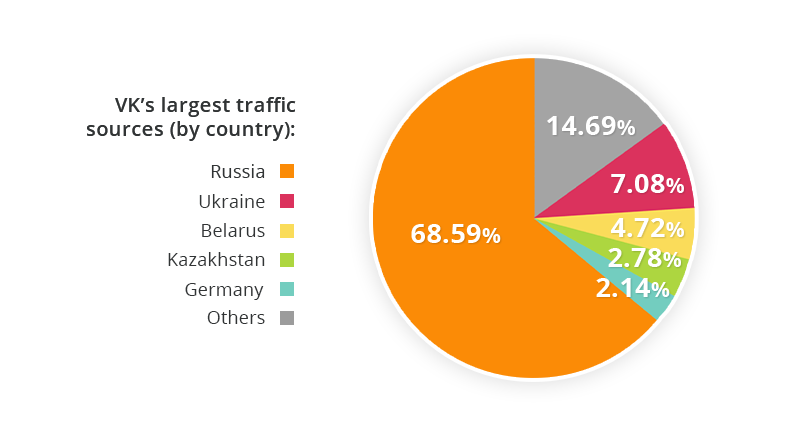
For lots of reasons, VK is often compared to Facebook. Its features are pretty similar to Mark Zuckerberg’s platform. The interface uses a blue colour that Facebook users will be familiar with and overall the functionality is comparable.
VK’s users can publish their thoughts, photos and videos on their profiles, connect with friends and follow communities (like FB groups or profiles). Users are known to consider the network as easier to use and more transparent than Facebook, and that’s probably one of the reasons why VK is more popular in Russia than Facebook.
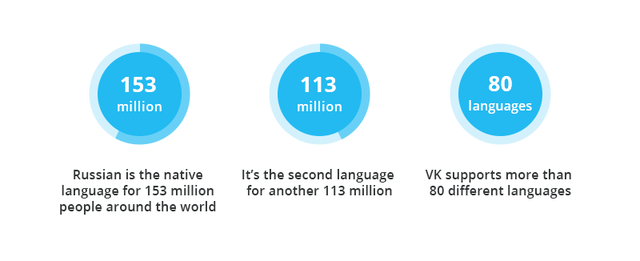
Video hosting is central to VK
VK is widely used as a video hosting platform. Users make the most of VK’s features to share a wide selection of different video types.
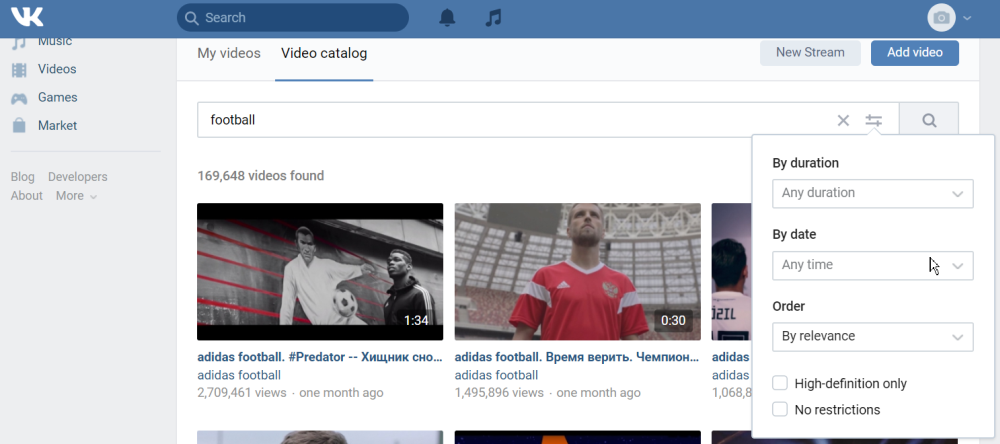
Contrary to Facebook, VK also has a really neat search engine, which is a powerful tool that allows users to search for video content pretty easily, using convenient sets of parameters. Thanks to its search, VK is more akin to YouTube, as you can search through past and present video content with ease.
To picture how big and important the service is in Russia: VK has a bigger monthly audience than any Russian TV station, including the public service, Channel 1[3].
Social media in Russia = VK
VK is full of really strong communities (groups) created around or dedicated to different brands. These groups are created by users in praise of brands. However, the content published within each group is often not in tune with a brand’s own standards. To understand this better, let’s take a look at Nike[4].
Nike on VK
The biggest group dedicated to the brand has more than 1.6million users, while all three of the official Russian Nike profiles have around a third of that amount in total.
The unofficial groups are often used to share content that is interesting to its community and not content controlled by the brand. For example, the biggest VK group called ‘Nike’ is often dominated by game trailers or funny pictures, most unrelated to sports products. This throws up interesting questions about how you might connect with these groups, and influencers could play a vital role here.
The official Nike profiles tend to make use of numerous sets of VK tools to promote the Nike brand, including built-in e-commerce and sponsored content.
For other brands wanting to enter VK, don’t worry as the tools are already there for all to use, ready to help boost the visibility of your brand. Here at Tellyo, our cloud-based video production platform also integrates with VK, enabling you to easily publish video content to the social network.
Other brands on VK
Among other big sports brands present on VK, you can find FC Bayern Munich and Manchester City, but also the NBA, UEFA and dozens of video game titles. There are also many global fashion and beauty brands fighting for the attention of a Russian audience. If there is no official account of a global brand, there will be at least one or two groups dedicated to them.
What’s in it for you?
VK users are very receptive towards big, international brands. Brands can benefit remarkably from being present and active on this Russian social media network, where online communities play a huge role. So, if you’re thinking about developing a greater presence in Russia, then being on VK is a must and key to potential fans and customers noticing your content and brand. And we’re here to help, as our Tellyo platform integrates seamlessly with VK, meaning you can reach audiences on this social channel with real-time video content.
If you’d like to find our more, drop a message to contact@tellyo.com.
Local social media to explore – VK in Russia
The internet in 2018 might look like a monolith at times, especially from an English-speaking perspective: Facebook, Netflix, the next iPhone release. However, there’s lots of life outside of this Western mainstream bubble.
So, if you’re planning to target new regions and reach broader global audiences with your video content, you might want to consider what other local solutions and platforms are available to you.
Interested in sports-related topics? Check out our other stories:
- Great sports personalities to follow at the 2018 Winter Olympics in PyeongChang.
- A quick guide to understanding esports and gaming fans.
Here, I would like to introduce you to VK – the main social network in Russia, the 9th most populated country in the world.
In touch with VK
Launched in 2006, VK (VKontakte, which translates as ‘in touch’) is an extremely successful social network. It’s very popular in Russia and some former soviet republics, like Belarus, Kazakhstan and Ukraine, but also receives a noticeable amount of traffic from Germany[1].
VK is ranked as the 11th most popular website in the world, which means it’s more popular than Twitter, Amazon, Instagram or Wikipedia globally. Needless to say, it is number one in Russia and even more popular than the country’s two leading search engines – Russian Yandex and Google!

For lots of reasons, VK is often compared to Facebook. Its features are pretty similar to Mark Zuckerberg’s platform. The interface uses a blue colour that Facebook users will be familiar with and overall the functionality is comparable.
VK’s users can publish their thoughts, photos and videos on their profiles, connect with friends and follow communities (like FB groups or profiles). Users are known to consider the network as easier to use and more transparent than Facebook, and that’s probably one of the reasons why VK is more popular in Russia than Facebook.

Video hosting is central to VK
VK is widely used as a video hosting platform. Users make the most of VK’s features to share a wide selection of different video types.

Contrary to Facebook, VK also has a really neat search engine, which is a powerful tool that allows users to search for video content pretty easily, using convenient sets of parameters. Thanks to its search, VK is more akin to YouTube, as you can search through past and present video content with ease.
To picture how big and important the service is in Russia: VK has a bigger monthly audience than any Russian TV station, including the public service, Channel 1[3].
Social media in Russia = VK
VK is full of really strong communities (groups) created around or dedicated to different brands. These groups are created by users in praise of brands. However, the content published within each group is often not in tune with a brand’s own standards. To understand this better, let’s take a look at Nike[4].
Nike on VK
The biggest group dedicated to the brand has more than 1.6million users, while all three of the official Russian Nike profiles have around a third of that amount in total.
The unofficial groups are often used to share content that is interesting to its community and not content controlled by the brand. For example, the biggest VK group called ‘Nike’ is often dominated by game trailers or funny pictures, most unrelated to sports products. This throws up interesting questions about how you might connect with these groups, and influencers could play a vital role here.
The official Nike profiles tend to make use of numerous sets of VK tools to promote the Nike brand, including built-in e-commerce and sponsored content.
For other brands wanting to enter VK, don’t worry as the tools are already there for all to use, ready to help boost the visibility of your brand. Here at Tellyo, our cloud-based video production platform also integrates with VK, enabling you to easily publish video content to the social network.
Other brands on VK
Among other big sports brands present on VK, you can find FC Bayern Munich and Manchester City, but also the NBA, UEFA and dozens of video game titles. There are also many global fashion and beauty brands fighting for the attention of a Russian audience. If there is no official account of a global brand, there will be at least one or two groups dedicated to them.
What’s in it for you?
VK users are very receptive towards big, international brands. Brands can benefit remarkably from being present and active on this Russian social media network, where online communities play a huge role. So, if you’re thinking about developing a greater presence in Russia, then being on VK is a must and key to potential fans and customers noticing your content and brand. And we’re here to help, as our Tellyo platform integrates seamlessly with VK, meaning you can reach audiences on this social channel with real-time video content.
If you’d like to find our more, drop a message to contact@tellyo.com.
A quick guide to understanding esports and gaming fans
Some weeks ago, I presented hard evidence to prove that esports are very promising for broadcasters, especially due to audience growth and the monetisation opportunities available.
Now, it’s time to check who watches digital esports and how they do so to better understand the habits of this group.
A stereotype-busting range of ages
While gaming may sometimes be viewed as a novelty, it has been present in popular culture since way back in the early 70s – back when Pong was released by Atari. Since then, thanks to the rapid development of technology, games are a popular pastime for many people across the globe. And not necessarily just young people.
This is how it looks in the US, regardless of gender:
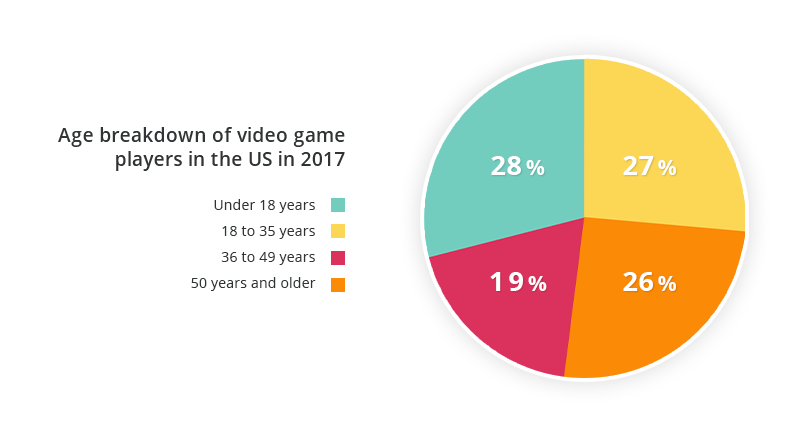
In the above, the 26% of 50+ gamers may remember playing the original Pong, released in pre-internet times and when Richard Nixon was in the Oval office! With almost one-third of players under 18, it looks as though games continue to have a presence throughout someone’s whole life. Most likely, today’s under-18 gamers played their first games on a smartphone or other mobile device however!
Elsewhere, other research has shown that the average gamer is 35 years old – with female players at 37 years old and male ones at 33[2]. These stats alone are enough to make you rethink this audience.
Females play too!
While the common stereotype of a gamer often refers to them as male teenagers or young men, the reality is a bit more complex. Women have a strong presence in gaming communities – 41% of US video game fans are women. This is compared to 59% men across all ages:
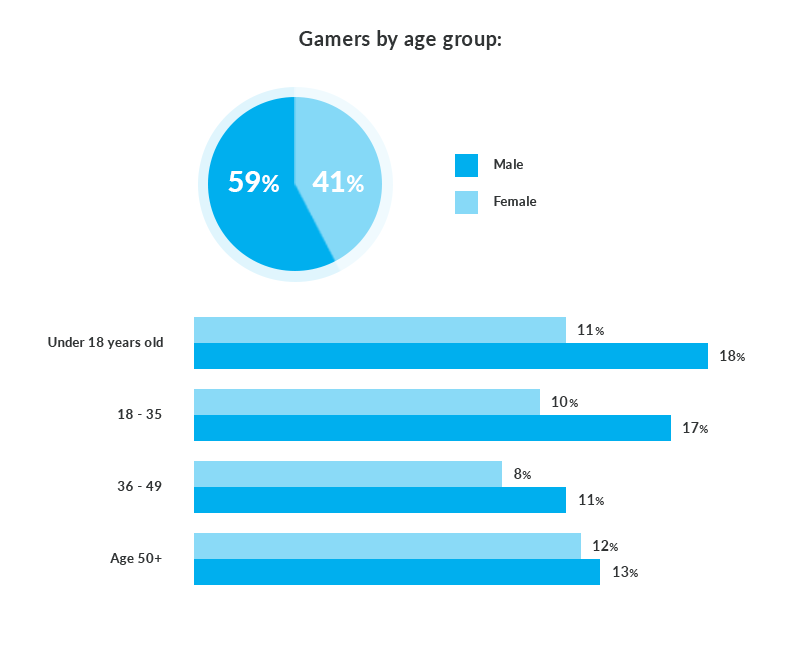
Gaming devices are widespread
In the US, 67% of households own a device that is used to play video games – either a PC, smartphone, wireless device, game console, handheld system or virtual reality device. In 65% of these US households there’s at least one person who plays three or more hours of video games a week. [4]
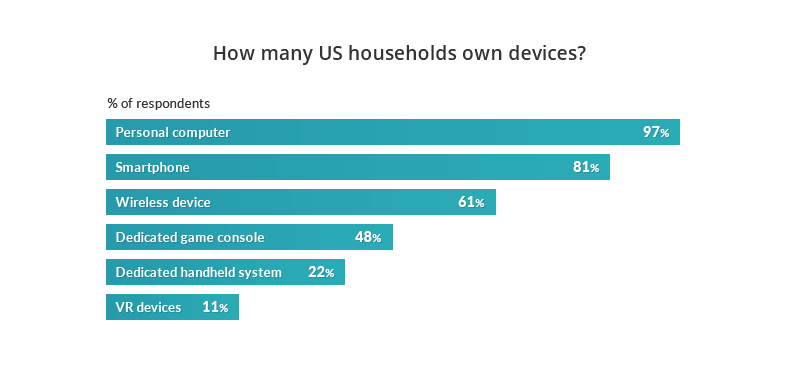
What’s worth a mention here is that gaming devices are very often ‘watching’ devices at the same time. PCs, laptops, smartphones and tablets are multipurpose and very often used as second screens.
To game, or just watch?
There are a lot of similarities between fans of traditional sports and esports. Like this one – that they will often prefer to watch events than actually play the sport (or esport) themselves. According to research by Newzoo, which focused on three of the most popular esports franchises – League of Legends (LoL), Counter-Strike: Global Offensive (CS:GO) and Dota 2 – [bctt tweet=”42% of esports viewers do not play the games they watch.” username=”TellyoTV”]
There are further similarities, with 70% of esports fans surveyed by Newzoo watching only content dedicated to one of the three games mentioned above.
So, how many sports are you following or how many teams do you actively support?
Esports fans aren’t very lavish… yet
The average spend by esports fans on their hobby is $3.64. Another $0.33 should be added as revenue from merchandise, event tickets and subscriptions. All in all, that’s not a great deal of spend, especially bearing in mind the huge prizes available at esports tournaments.
But this rapidly growing market isn’t saturated like traditional sports. For comparison – the average global revenue for a basketball fan is $15 per year, while $54 for all sports.
So, what’s behind such a big difference between esports and traditional sports?
- Esports are popular, but we’re unable to compare their popularity to traditional sports just yet.
- Traditional basketball, football or hockey leagues, for example, are often very well organised. They will have lots of sports events throughout the year and most countries will have their own leagues and cups etc.
- Merchandising in traditional sports is huge, bringing enormous profits to teams, sponsors and partners.
- Youth training systems are often in place for well-established sports – for example, football academies offer more structure for young players.
- Traditional sports get more publicity – their most popular players are pop-culture stars and recognisable around the world.
- Years of tradition – something esports naturally lack for now.
Revenues look to be rising
Average esports revenue per fan is growing and is optimistically forecasted to hit 3 billion dollars globally in 2020. This would count for $11 revenue per fan – which is quite an amount![5]
What’s fuelling such optimistic forecasts regarding future revenues from esports? Let the numbers speak:
- 43% of esports fans in US are earning $75 000 or more annually.
- 31% of esports fans in US have an annual income reaching $90, 000 or more.
According to the same survey, 57% of esports enthusiasts are over 25 years old and live with their children. Can we assume that someday they will pass their passion to younger generations? Well, we can’t foresee this for sure, but it seems pretty plausible[6].
A growing audience
Esports are gaining in popularity very quickly. Some predictions suggest that in 2020 there will be 286 million hard-core, esports enthusiasts and more than 300 million occasional viewers globally. Combining these two figures gives you some idea just how big esports might be in the coming years.
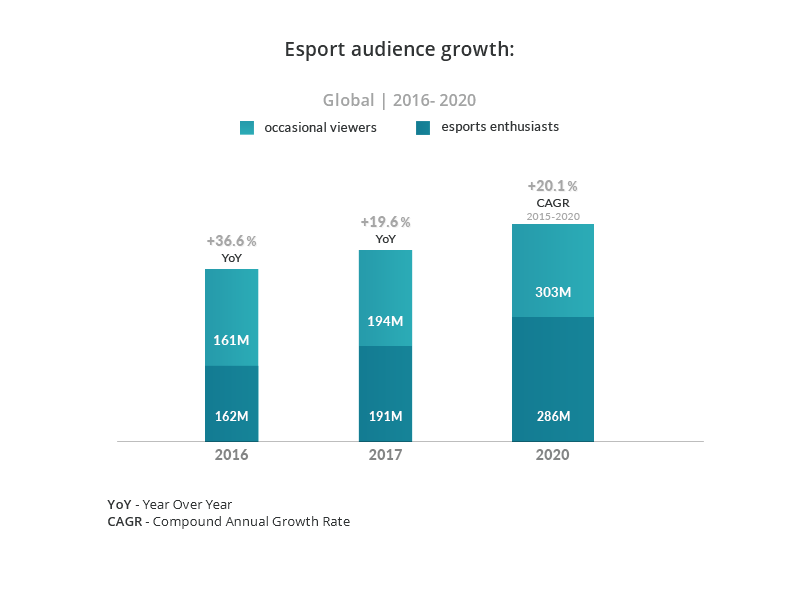
Interesting prospects
Beyond any doubt, esports fans and gamers are interesting prospects now and into the future. They represent a massive audience that brands, broadcasters and rights holders can tap into.
As an audience, esports fans and gamers are:
- Demographically diverse, with some surprising audience segments.
- Like traditional sports fans in the way they are often loyal to only a few favourite titles.
- Rising in numbers, with audience growth continually expanding.
- Limited in ways they can show their support and love for esports with their wallets, besides watching streams and buying and playing games.
As a new type of entertainment, esports are still in a nascent stage – and the world of traditional sports can look saturated in comparison. Esports’ popularity is rapidly growing and there’s still time to jump on the bandwagon before it moves too fast like the flick of a gamer’s thumb.
[1], [2], [3], [4] Source 1,2,3,4
[5] 2017 Global esports market report, Newzoo
Your essential read if you’ve ever wondered how to make traditional TV cool again!
In the US, adults are spending more and more time with different kinds of digital media[1], while their attention is also shifting from traditional TV to PCs, and smartphones and tablets connected to the web.
What’s interesting is that while there is an enormous variety of traditionally broadcast TV channels to choose from (a monthly average of 206 channels according to Nielsen research), US adults only actively watch 20 of them[2]. In other Nielsen data for US adults, while TV still rules people are using a broader range of devices for home entertainment, with apps and the web now hot on the heels of TV. The total time spent on other devices now outweighs time spent watching traditional TV.
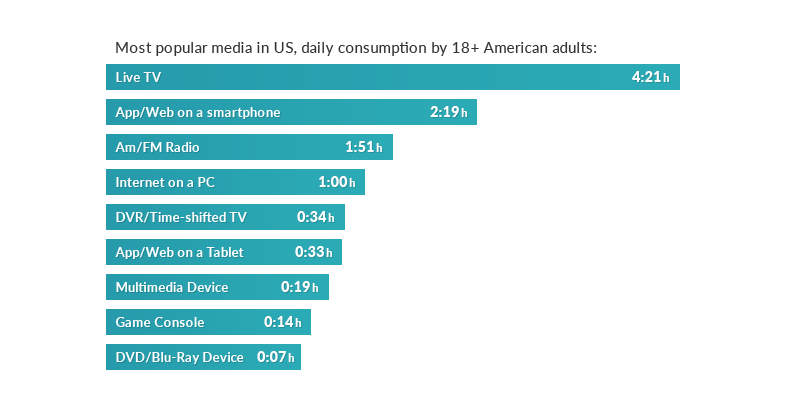
If you look at the behaviour of younger viewers in particular, what’s evident is that Generation Z (12-20 year olds) consume the smallest amount of traditional TV, either when live or time shifted/recorded. Arguably, this is the effect of a new and younger audience becoming bored (or simply not accustomed to) traditional TV’s linear approach, which might be a challenging argument to accept if you work in broadcast TV.
To help you to understand, let’s look at this analogy. Nowadays, traditional TV is like a middle-aged guy trying to gain popularity on Snapchat – the technology feels the same, the rules are clear, but somehow it simply doesn’t work for him. What he says and does is simply not attractive enough for the audience on that platform. (Believe me, I feel like this guy at times as I don’t always understand the buzz surrounding Snapchat.)
Back in the broadcasting world, you may be more than conscious that new ways of consuming media are coming. You might feel they’re already here. Yet, with huge resources, varied schedules and all the broadcasting technology at your disposal, perhaps you’re still left wondering why traditional TV isn’t as attractive as it was? Perhaps you can’t quite put your finger on why this is the case.
Let’s take a closer look at some of the opportunities and threats below.
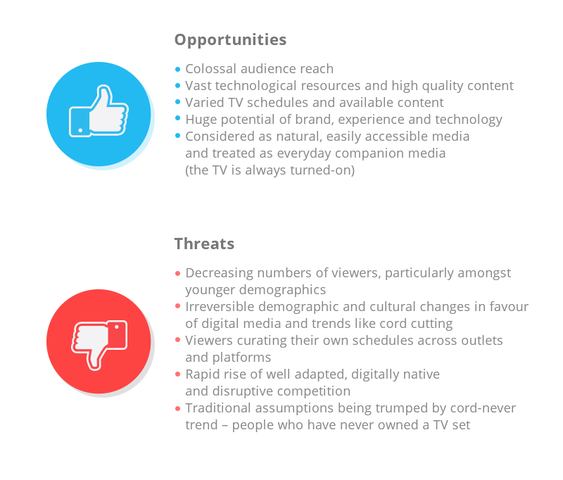
What’s common amongst the above threats is the impact of the internet and the smartphone. Viewers now have more flexibility – they can watch and interact with digital, web TV and OTTs in any manner they like, where and when they want, and on the device of their choosing.
Why should viewers miss the ol’ set-top box? So, is this the end of linear TV as we know it? It’s too early to jump to this kind of conclusion. For sure, there are now many more options to traditional TV and improvements that linear broadcasters should make to stay in the game.
Let’s dive in and check out six ways you can sharpen your focus to stay alive in this fast-paced, digital-first world.
- Make the web your friend and ally
- Use your TV brand as leverage
- Your experience is your advantage
- Retain your loyal viewers
- Work across platforms
- Conversations – it takes (at least) two to tango!
First things first, if you haven’t done so already, make your brand more visible online by expanding your social media presence. Take time to reconsider your options, making an audit of your efforts to date to identify what’s worked and what hasn’t.
When relaunching your social media presence, have a video content strategy in place that puts you in a position to start streaming and producing videos for social channels. Streams and social videos make for highly engaging web content and, as a broadcaster, you are ideally placed to create a constant stream of such content. To do so, choose social video production tools and platforms that will fit your needs, and ones that will enable you to stream and produce videos from live content and any archival content you want to use.

Live streams and videos are undoubtedly the most engaging types of content. When checking Facebook streaming results for one of our Tellyo clients, we learned that it is possible to create up to 400 interactions per 1,000 fans with live video, while images were able to reach only 6 interactions per 1,000. For further interesting stats, check out the case studies section on our website.
Having a strong and recognisable brand is unbelievably helpful online – it will help you to stand out. If your logo is well known, you should remember to place it on your video content, so that when this spreads around the internet you get the brand recognition you deserve. With a little bit of luck, many viewers will trace your quality content back to your channel or Facebook page.
Being experienced with video production and everything broadcasting related is a huge advantage over your competitors. Being able to create TV-grade video content, while having an experienced team and professional equipment are all strong assets. However, these assets aren’t enough to be successful on the web and in the social media, but they will help a lot. You can always talk to us here at Tellyo about how to combine your experience with an advanced, social video production platform such as ours.
Have you ever heard of the Pareto principle[4]? Better known as the 80/20 rule which states that 80% of the effects come from 20% of the causes. Translating this into broadcast language – it means that 20% of your audience is responsible for 80% of your views. Therefore, if you want to be successful in social media, play to your core audience. Let them know that soon they will be able to watch their favourite shows and events via other media as well.
Remember that social media isn’t monolithic – it’s decentralised and each platform has its own properties. You shouldn’t copy and paste your strategy from one channel to another. For example, if you decide to stream content then use YouTube, Facebook or Twitter, but only YouTube will be a good place as a platform to host clips for a longer period. Facebook will give you a big audience and visibility initially, but people will not find your videos once they vanish from timelines.
Your audience has a voice, and it will use it. In comments, emails and chats, they will use each possible channel to give you their opinion about your content. And that’s a good thing – a gold mine of interactions and engagement to treasure. You should work hard to maintain these conversations. Be active: answer questions and ask for opinions.
It’s too early to abandon ship
Traditional, linear TV still has a lot to offer audiences. But the TV landscape in the next 5-10 years will be dramatically different to what we have now.
In the meantime, there is likely to be many more advances and disruptive changes. Now is your chance to decide whether you want to be part of it or not.
8 common live streaming mistakes that will create a horror show
Let’s face it, Halloween is a lot of fun. But only because it represents horrors that are not real. However, in the broadcasting industry real nightmares can happen, especially when live streaming to social media.
(By the way, have you seen the new Tellyo already?)
In this post, I’m going to run through the most common mistakes that will ruin your stream and scare off your audience.
Mistake #1: Being unprepared for technical difficulties

No matter how cool your event is, there are dozens of ways technical issues can wreck your stream. You can’t avoid equipment failure, nor repair an unpredictable internet outage. But you can think about providing alternative streams for users who are unable watch on Facebook or YouTube, for whatever reason. The same goes with streams at different qualities – depending on bandwidth, some users may want to skip 1080p and use 480p instead.
Think of alternatives to ensure your audience receives a broadcast one way or another.
Mistake #2: Not planning for when social becomes unsocial

When streaming content to platforms like YouTube, Twitter or Facebook you probably want to have as many viewers as possible, right? If so, the more people you attract, the more likely it is you’re going to draw the attention of people not always behaving properly or nicely. Trolls will be trolls, spammers will be spammers – but you must not let them take charge in a public chat or in your comments section. Put in place a moderator who can keep your broadcast free of these kinds of ‘users’.
The web is full of terrors trolls. Protect your audience from them.
Mistake #3: Failing to fill the gaps

For every single digital broadcaster who’s streaming live sports – remember half time!
People will be watching your content for entertainment. When nothing is happening during the breaks, show them something. Think along the lines of previously prepared highlights, bloopers, statistics or interviews with players. Otherwise your audience will open a new tab to scroll their Facebook feed or to watch a music video on YouTube. Simply put – you’ll lose them.
[bctt tweet=”You can’t afford to bore your audience, so provide them with entertainment!” username=”TellyoTV”]
Mistake #4: Forgetting to chop and cut… content

While live streaming, don’t forget about the people not able to follow your live stream, but who might be interested in what’s going on. Independent from your live broadcast, you should always clip and share highlights – such as goals, dunks and epic fails. This way, fans unable to catch the live stream can stay updated on what’s going on, and you can gain some extra views and reach.
Don’t stop creating content – the more clips you share, the bigger your audience will be.
Mistake #5: Not sending the memo!

No one will show up to your stream if you:
- Forget to post announcements before the actual event
- Plan the announcements too early or too late
- Spam your audience with waaaay too many announcements
You must remember to remind your users that you have a planned event, and make sure they are well informed about it.
Did you know that using Tellyo you can create Facebook announcement posts? These allow users to set reminders for events. How cool is that?
Mistake #6: Falling short when the end is nigh

The live broadcast shouldn’t be a singular event. It should be always preceded by announcement posts before the stream begins and not only on your chosen broadcast platform. During your broadcast, it’s also extremely important to produce short clips with highlights and replays, which will help drive new viewers to the live stream. Finally, after the broadcast, it’s your time to shine again – create highlights with summaries, clip compilations, top 5 plays etc.
Doing so, you will extend the broadcast from a one-off event to a longer, richer series of events focused on your main stream. Guess which one will attract more attention and viewers?
Tired of those scary horrors already? Try a love story instead!
Mistake #7: Being a silent (and creepy) administrator!

This is the face of someone who is streaming content to social media, but doing nothing more. He’s not taking part in discussions in comments section, he’s not answering questions, he’s not producing valuable content in the meantime and he’s definitely not a good example to follow.
Don’t be this guy!
Mistake #8: Missing your Frankenstein moment

Don’t forget to be like Frankenstein and bring your old stream alive again. To do so, simply make the video content available to watch after the live event. Remember to choose the platform wisely – on Facebook and Twitter, your videos will almost be unsearchable and lost after only a couple of hours or days.
YouTube seems to offer the best solution in this respect, but you could go further and create your own video library for your viewers to watch on demand. You could even start with a simple landing page and videos embedded from the Tellyo player, helping you to increase web traffic or even monetise videos if the demand for your content is high enough.
Make content available in many forms after a live stream. Get more attention, and gain viewers and traffic with your ‘post-mortem’ content.
Wrapping up (like a Halloween Mummy!)
Don’t be the one to broadcast a horror show! For your own, and your audience’s sake, don’t make the above mistakes. And not only during Halloween!












